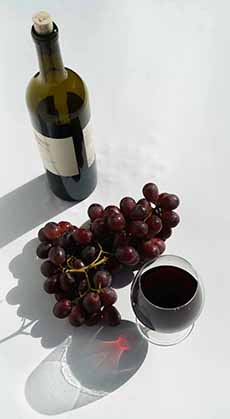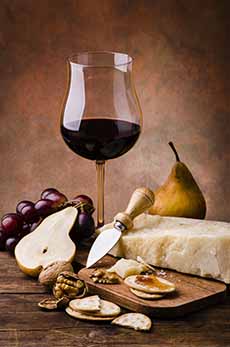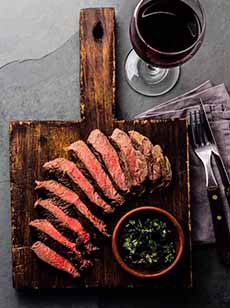What Is Carmenere Wine & The History Of Carmenere
|
|
November 24th is National Carmenénère Day. Many people will say, understandably, “What’s that?” People looking for a good value in red wine should take a look. Many bottles are available in the $10 to $20 range, with the crème de la crème going for $100 and more. > The Year’s 25+ Red Wine Holidays. > Pairing Wine With Ice Cream & Sorbet. Carmenénère is a red wine grape variety that originated in the Bordeaux region of France, a natural crossing of Cabernet Franc and Gros Cabernet. It was traditionally used in blending with other grape varieties, particularly Merlot and Cabernet Sauvignon. The grape was thought to have been largely extinct in Europe due to the phylloxera epidemic* in the 19th century, but it was rediscovered in Chile in the mid-1990s. It was then that Chilean winemakers discovered that some of the Merlot vines they were cultivating were actually Carménère. This led to the realization that Carménère had unknowingly been grown in Chile for decades, masquerading as Merlot. With a focus on the Carménère varietal achieved great success in Chile, where it found a particularly suitable environment for cultivation†. Carménère has become a flagship grape for Chilean winemakers, and it has gained popularity both domestically and internationally. They exhibit dark fruit notes such as blackberry, black cherry, plum, and raspberry, along with hints of green bell pepper, herbal, black pepper, and other spicy notes. Some expressions may also showcase chocolate, tobacco, or vanilla notes. The tannins in Carménère can be moderate to high, contributing to the wine’s structure, and the acidity is generally moderate. These make the wines well-suited for aging. With age, the wine can develop additional complexity and time will smooth out its tannins. As with all wines, the characteristics of Carménère can vary depending on terroir (the region where it’s grown, the climate, etc.) and the wine-making techniques employed. |
|
|
________________ *Around 1860, a microscopic yellow aphid called phylloxera (Phylloxera astatrix) began to decimate Europe’s vineyards; some 70% of Europe’s vineyards were devastated. France is considered to have been worst affected [source]. Vineyards were replanted with hybrid wines from the U.S. that crossed the Vitis vinifera with resistant grape varieties. †The majority of Chilean Carménère is grown in the Central Valley. In the Central Valley, in the Maipo Valley and Rapel Valley, and in the sub-regions of Colchagua Valley and Cachapoal Valley, among other areas. CHECK OUT WHAT’S HAPPENING ON OUR HOME PAGE, THENIBBLE.COM.
|
||





